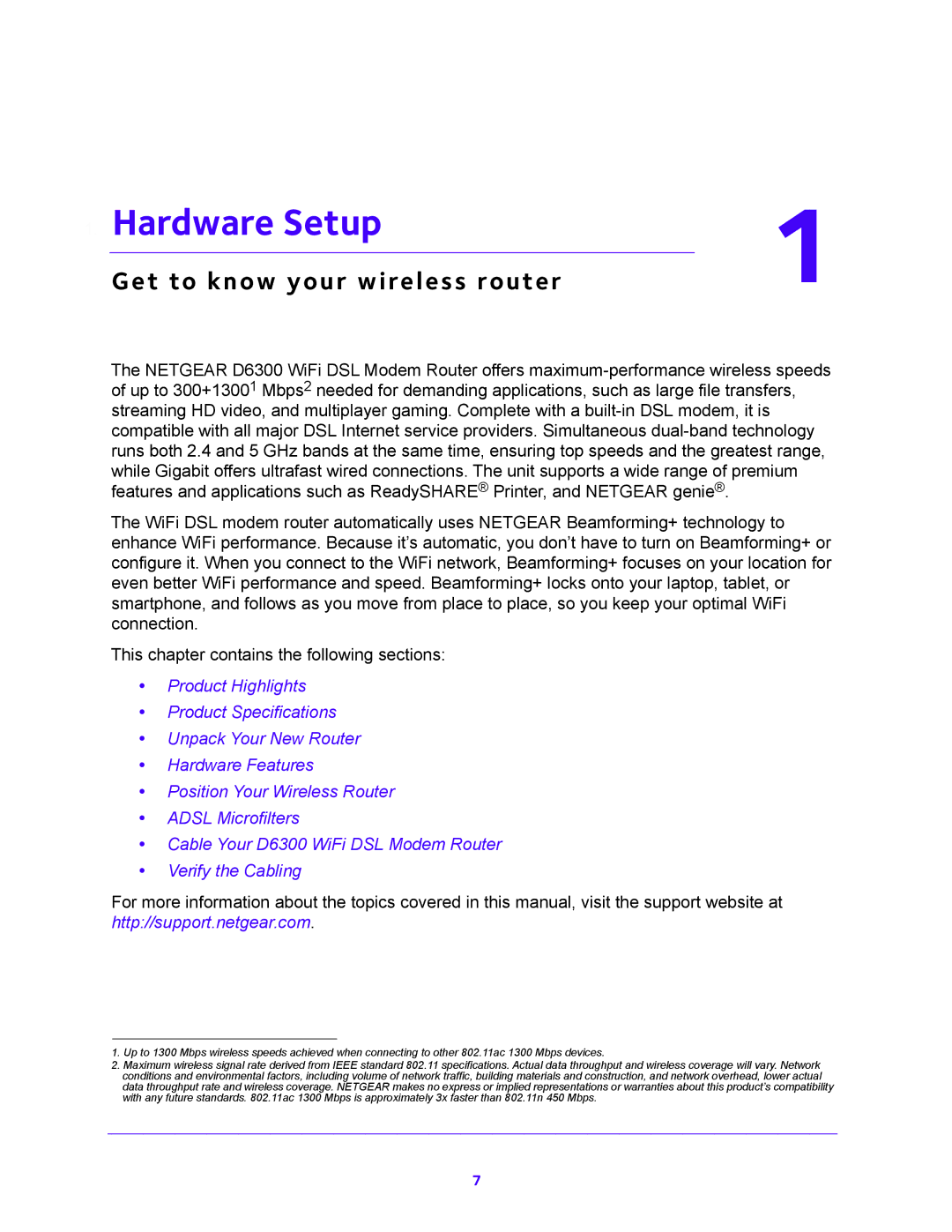
1. Hardware Setup | 1 |
Get to know your wireless router |
The NETGEAR D6300 WiFi DSL Modem Router offers
The WiFi DSL modem router automatically uses NETGEAR Beamforming+ technology to enhance WiFi performance. Because it’s automatic, you don’t have to turn on Beamforming+ or configure it. When you connect to the WiFi network, Beamforming+ focuses on your location for even better WiFi performance and speed. Beamforming+ locks onto your laptop, tablet, or smartphone, and follows as you move from place to place, so you keep your optimal WiFi connection.
This chapter contains the following sections:
•Product Highlights
•Product Specifications
•Unpack Your New Router
•Hardware Features
•Position Your Wireless Router
•ADSL Microfilters
•Cable Your D6300 WiFi DSL Modem Router
•Verify the Cabling
For more information about the topics covered in this manual, visit the support website at http://support.netgear.com.
1.Up to 1300 Mbps wireless speeds achieved when connecting to other 802.11ac 1300 Mbps devices.
2.Maximum wireless signal rate derived from IEEE standard 802.11 specifications. Actual data throughput and wireless coverage will vary. Network conditions and environmental factors, including volume of network traffic, building materials and construction, and network overhead, lower actual data throughput rate and wireless coverage. NETGEAR makes no express or implied representations or warranties about this product’s compatibility with any future standards. 802.11ac 1300 Mbps is approximately 3x faster than 802.11n 450 Mbps.
7
